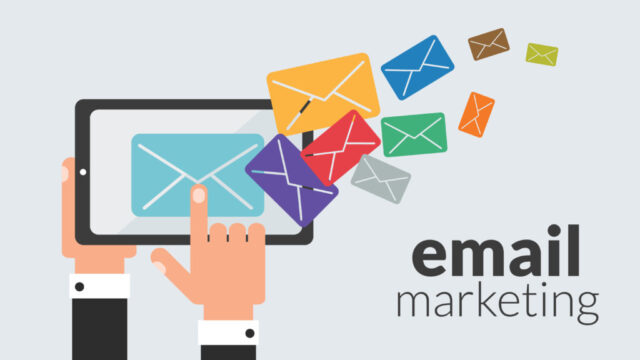Email marketing is one of the most effective ways to reach and engage your audience. However, sending generic emails to your entire list can lead to low engagement rates and higher unsubscribe rates. This is where email marketing segmentation comes into play. By dividing your email list into smaller, more targeted groups, you can tailor your messages to better meet the needs and preferences of your audience. In this blog post, we’ll explore how to use email marketing segmentation for better targeting and improved results.

Business tablet computer with email marketing. Vector concept for online advertising
1. Understanding Email Segmentation
Email segmentation is the process of dividing your email list into distinct groups based on specific criteria. These criteria can include demographics, behavior, purchase history, engagement level, and more. By segmenting your audience, you can send more relevant and personalized emails that resonate with each group, ultimately increasing open rates, click-through rates, and conversions.
2. Why Segment Your Email List?
Segmenting your email list offers numerous benefits:
- Increased Relevance: By targeting specific groups with tailored content, you improve the relevance of your emails, making recipients more likely to engage.
- Improved Open and Click-Through Rates: Personalized emails tend to have higher open and click-through rates compared to generic messages.
- Reduced Unsubscribe Rates: When recipients receive content that resonates with them, they are less likely to unsubscribe.
- Enhanced Customer Loyalty: Targeted emails can foster stronger relationships with your audience, leading to increased customer loyalty and retention.
3. Types of Segmentation
To effectively segment your email list, consider the following approaches:
a. Demographic Segmentation
This involves categorizing your audience based on demographic information such as age, gender, income, location, and occupation. For example, a clothing retailer might segment their audience into groups for men’s and women’s clothing promotions.
b. Behavioral Segmentation
Behavioral segmentation focuses on how subscribers interact with your emails and website. This can include:
- Past Purchases: Target customers based on their purchase history, offering relevant product recommendations or discounts.
- Email Engagement: Segment subscribers based on their engagement levels, such as open and click rates. You can create segments for highly engaged users, those who rarely open emails, and inactive subscribers.
- Website Behavior: Analyze how users navigate your website to create segments based on their interests and preferences.
c. Psychographic Segmentation
Psychographic segmentation considers the values, interests, and lifestyles of your subscribers. This can include:
- Personal Interests: Tailor content based on subscribers’ hobbies, preferences, and lifestyles. For example, a travel agency might segment their list into adventure travelers and luxury vacationers.
- Buying Motivation: Understand what motivates your audience to make purchases, such as price sensitivity or brand loyalty.
d. Geographic Segmentation
Geographic segmentation involves dividing your list based on location. This is particularly useful for businesses with location-specific offerings. You can send targeted emails based on regional promotions, events, or local news.
4. How to Implement Segmentation
a. Collect the Right Data
To effectively segment your email list, you need to collect relevant data. This can be done through:
- Sign-Up Forms: Use sign-up forms that ask for essential information, such as demographics and interests.
- Surveys and Polls: Periodically send surveys to your subscribers to gather more detailed information about their preferences and needs.
- Website Analytics: Use website analytics tools to track user behavior and interests.
b. Use Email Marketing Tools
Many email marketing platforms offer built-in segmentation features. These tools allow you to create and manage segments easily. Look for platforms that offer:
- List Segmentation Features: The ability to create and manage segments based on various criteria.
- Automation Capabilities: Set up automated campaigns that target specific segments with personalized content.
c. Test and Optimize Your Segments
Once you’ve created your segments, it’s essential to test and optimize them regularly. Analyze the performance of your segmented campaigns, looking at metrics such as open rates, click-through rates, and conversions. Based on your findings, adjust your segments and strategies as needed to improve results.
5. Crafting Targeted Campaigns
With your segments in place, it’s time to craft targeted email campaigns:
- Personalized Content: Tailor your email content to match the interests and preferences of each segment. Use dynamic content to show different products or offers based on the recipient’s profile.
- Relevant Subject Lines: Write subject lines that resonate with the specific needs of each segment. A well-crafted subject line can significantly increase open rates.
- Timely Offers: Send promotions or content that align with the needs of each segment, such as seasonal offers, product launches, or educational content.
6. Monitor and Adjust
Finally, continually monitor the performance of your segmented campaigns. Keep an eye on key metrics such as open rates, click-through rates, and conversions to assess effectiveness. Based on this data, refine your segments and email strategies to ensure ongoing success.
Conclusion
Email marketing segmentation is a powerful tool that can help you better target your audience and drive better results. By understanding your subscribers and crafting tailored content, you can enhance engagement, boost conversions, and build stronger relationships with your audience. Start implementing segmentation strategies today, and watch your email marketing efforts yield improved outcomes!


No responses yet